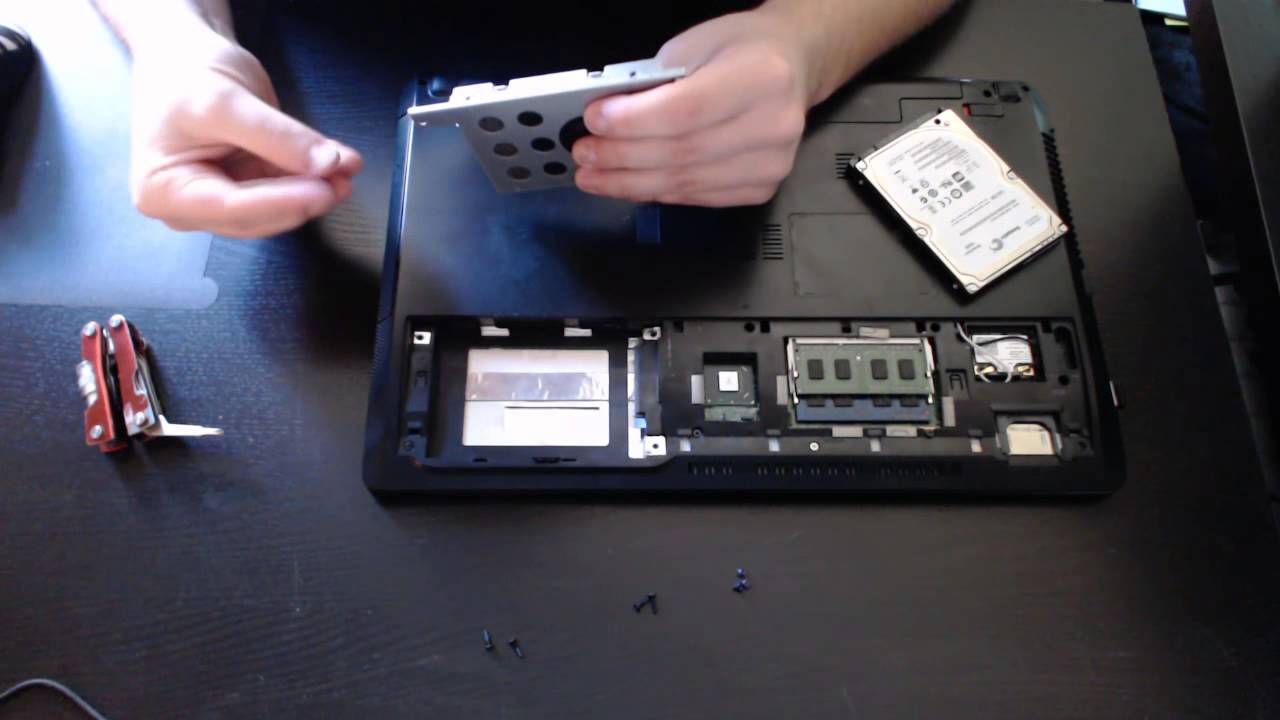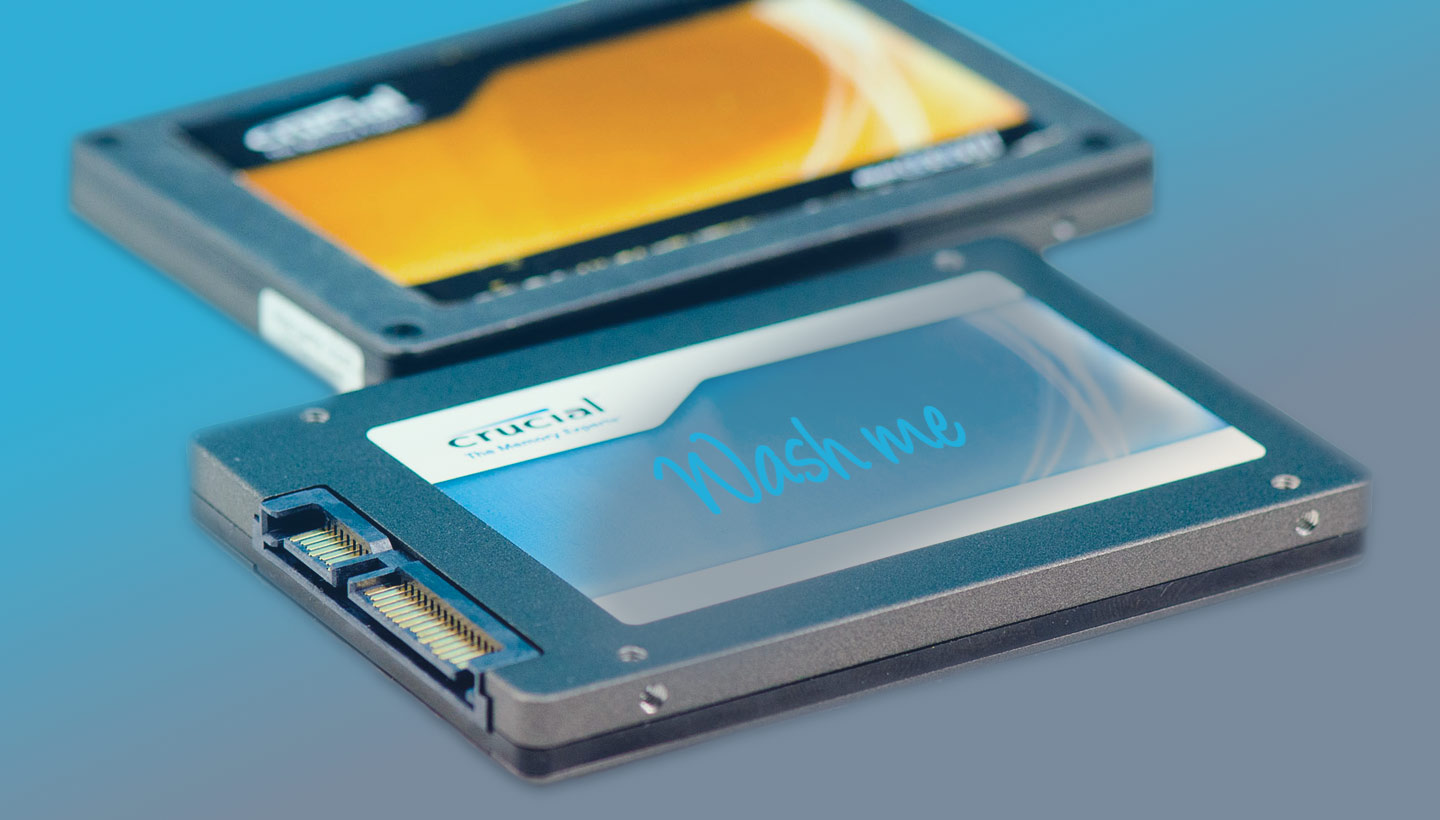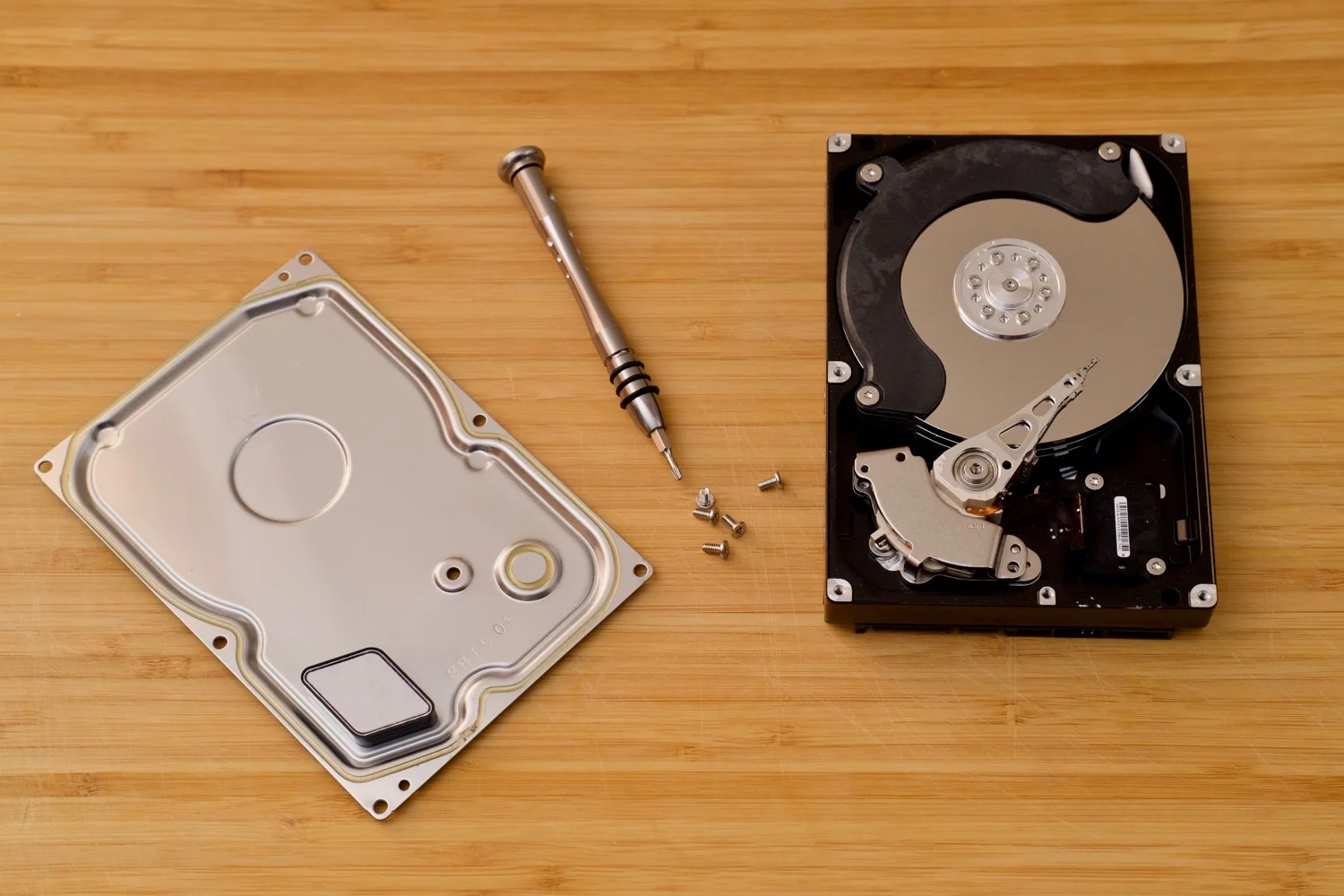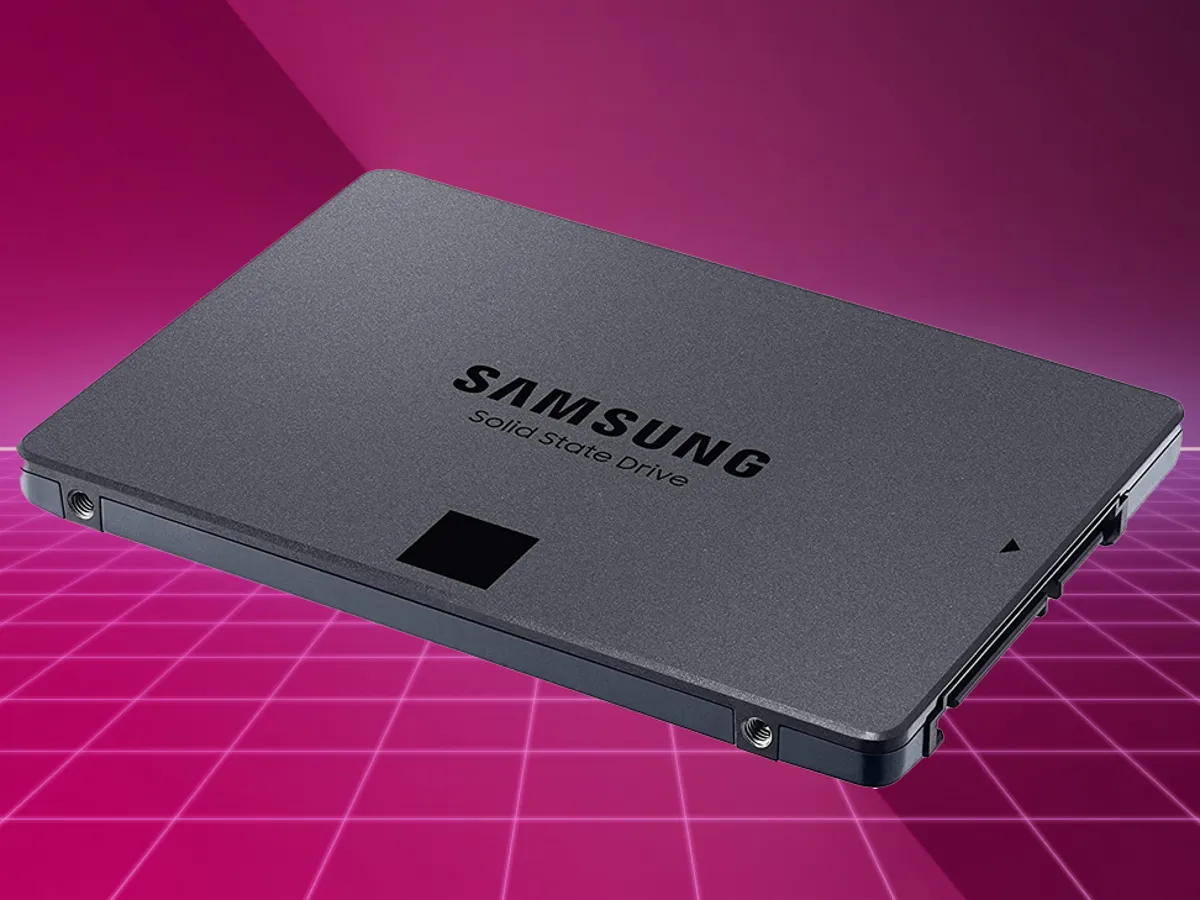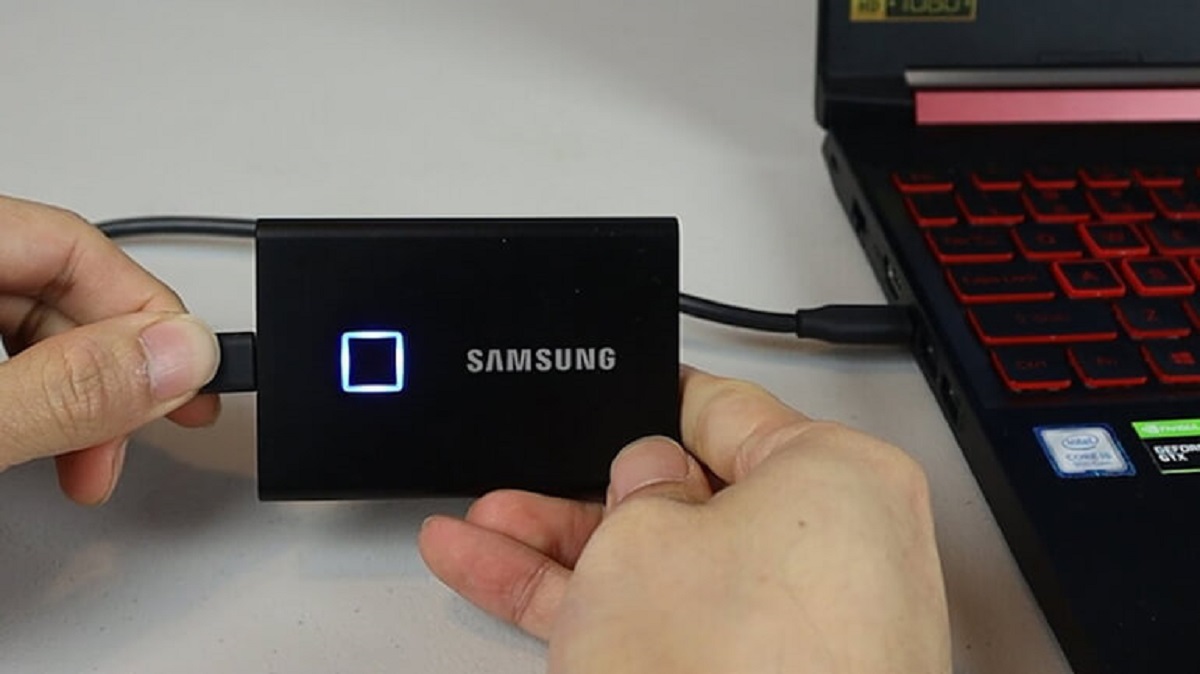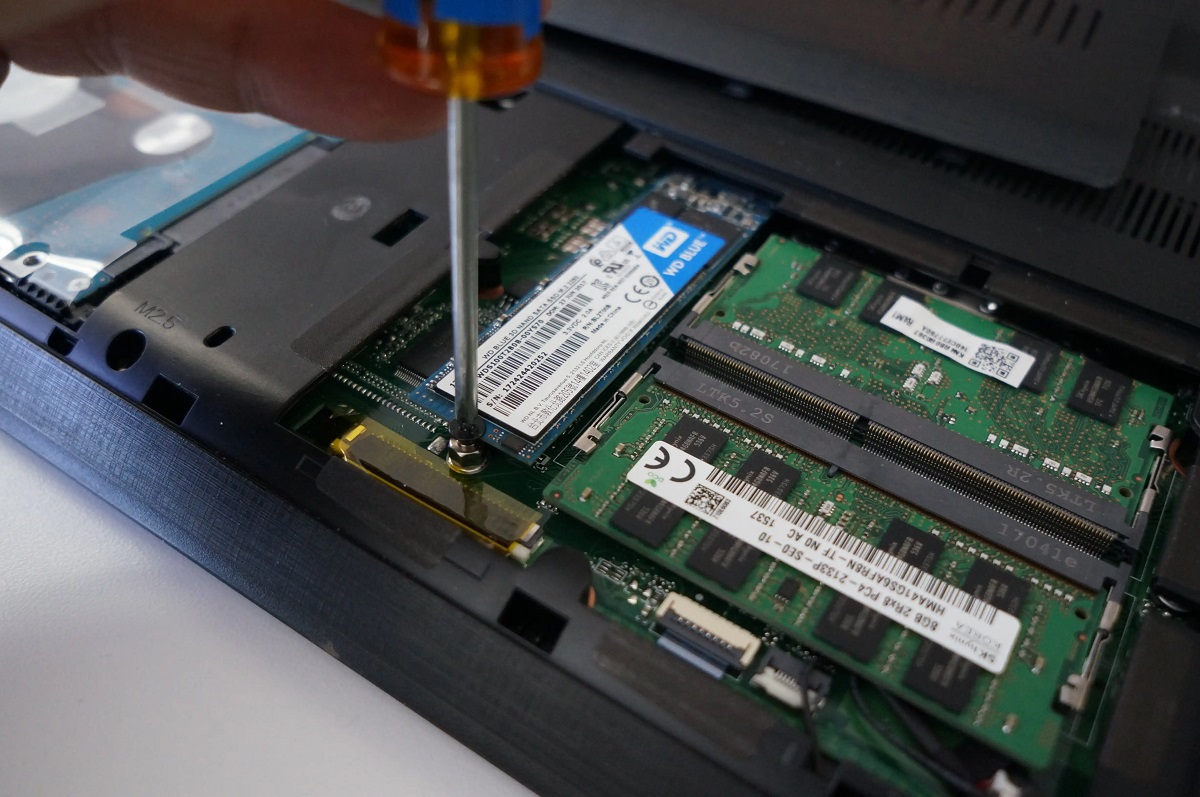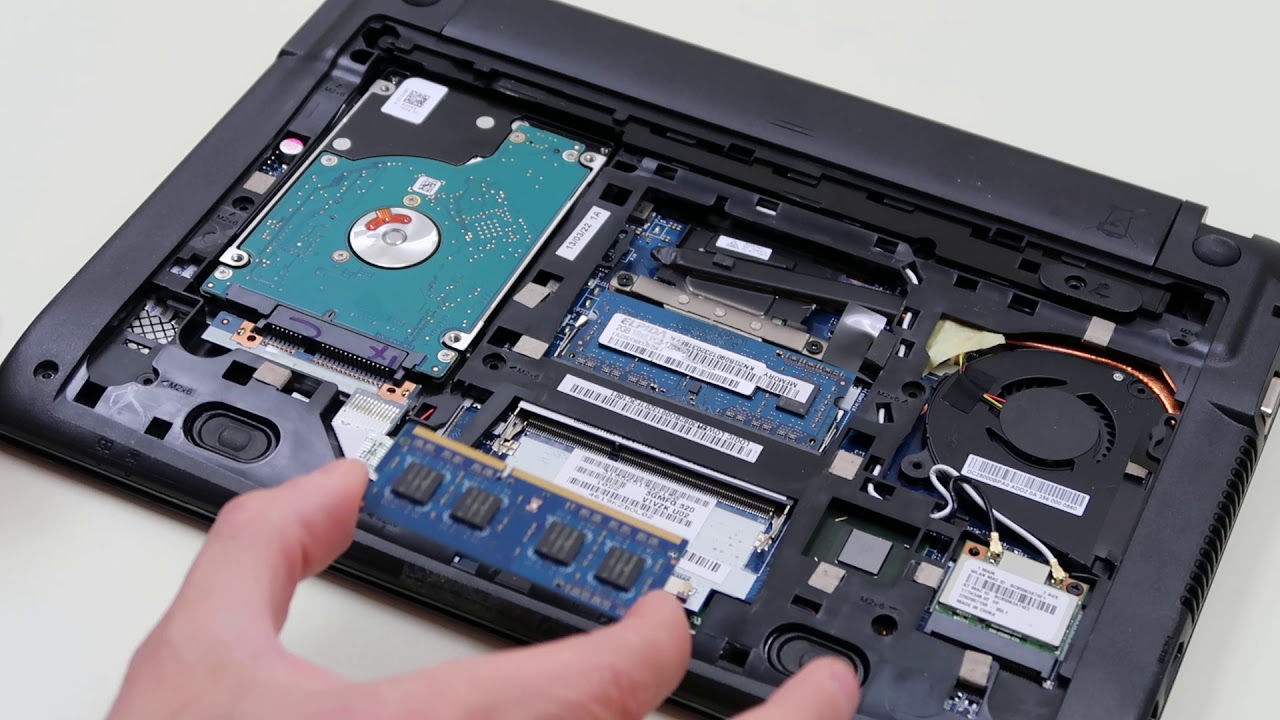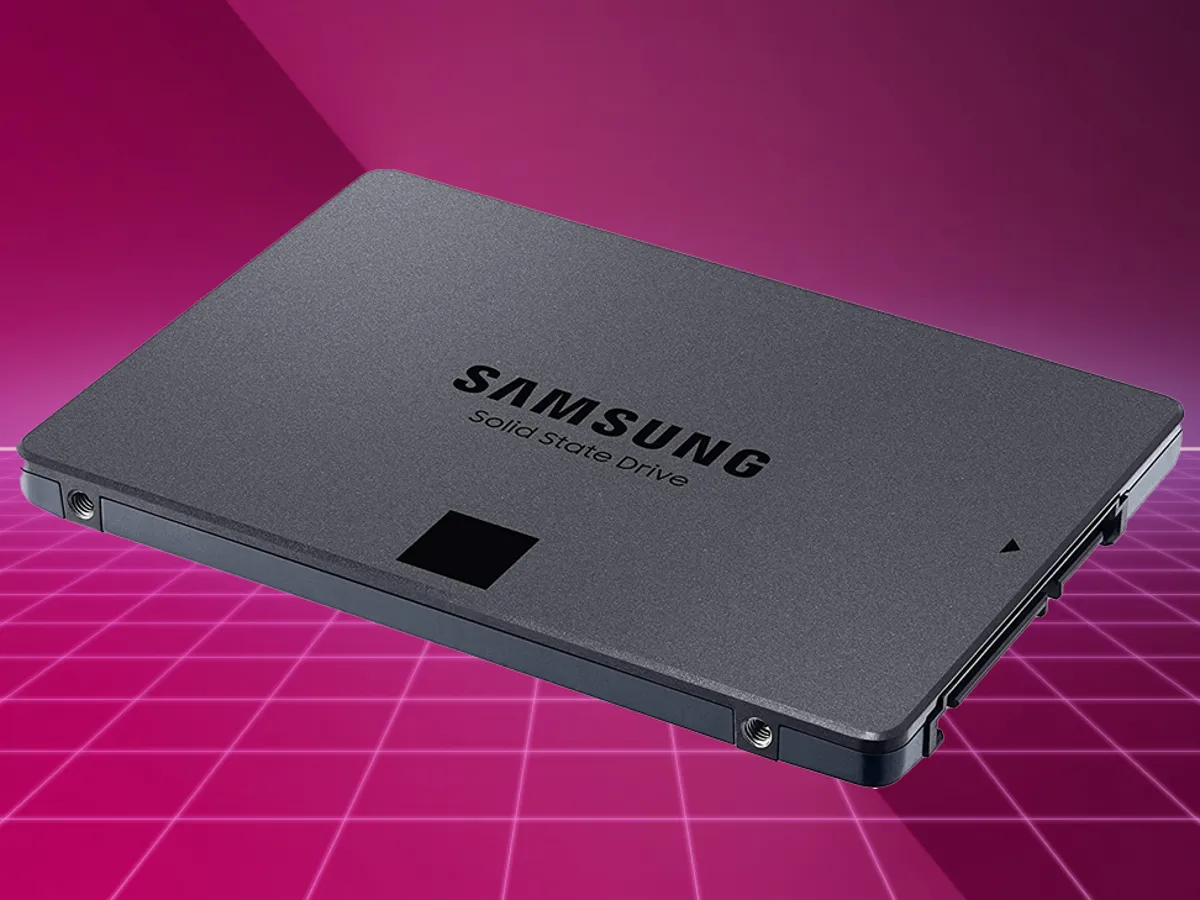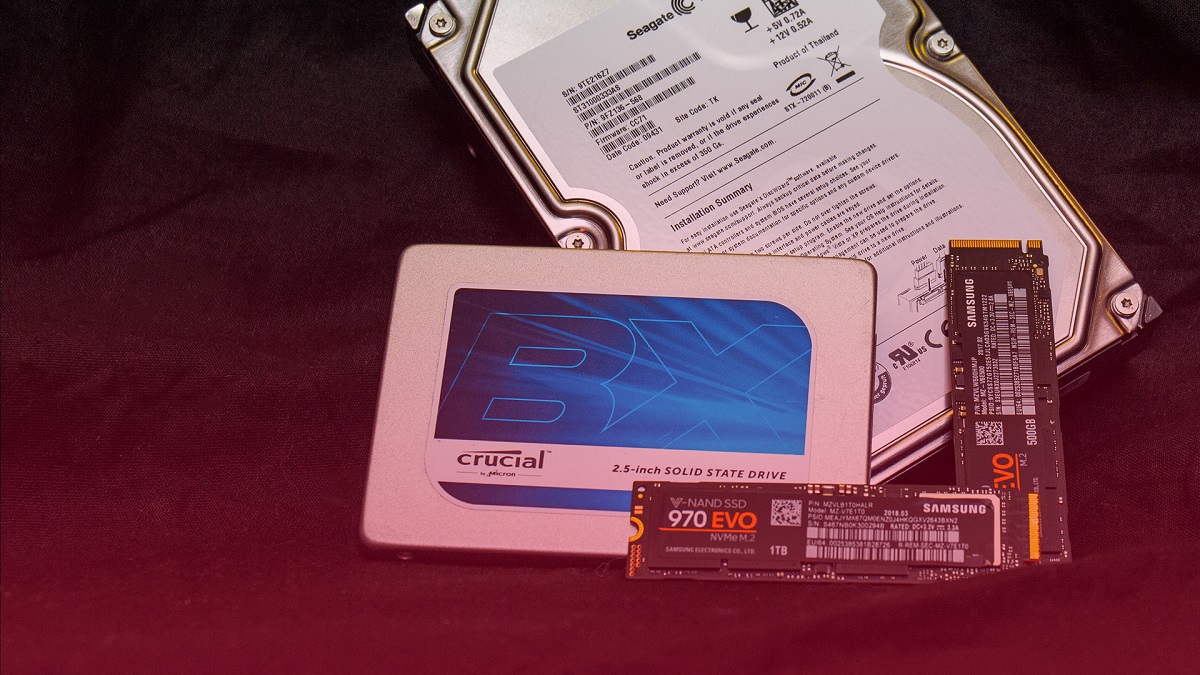Introduction
Welcome to the world of SSD drives, where lightning-fast speeds and efficient performance are the name of the game. Solid State Drives (SSDs) have quickly become the go-to storage solution for many computer users due to their unparalleled speed and durability. However, just like any other storage device, SSDs can experience a decline in performance over time.
If you’ve noticed a decrease in speed or overall sluggishness, it might be time to clean up your SSD drive. Regularly maintaining your SSD can help optimize its performance, improve longevity, and free up valuable storage space. In this article, we will guide you through the process of cleaning up and optimizing your SSD, ensuring that it remains in top-notch condition.
Before we dive into the specifics, it’s important to understand why cleaning up your SSD drive is essential. As you use your computer, temporary files, redundant data, and unused programs can accumulate, taking up valuable space on your SSD. Additionally, fragmentation can occur, causing the drive to work harder to access and retrieve data. Over time, these factors can slow down your system and reduce overall performance.
By following the steps outlined in this guide, you’ll be able to perform a thorough clean-up of your SSD, removing unnecessary files, optimizing storage, and disabling resource-intensive features that may be impairing its performance. So, let’s get started and breathe new life into your SSD drive!
Why Is Cleaning Up Your SSD Drive Important?
Cleaning up your SSD drive is crucial for maintaining optimal performance and maximizing its lifespan. Here are some key reasons why regular SSD maintenance is essential:
1. Improved Speed: Over time, as files and data are added to your SSD, the drive can become fragmented, meaning that data is stored in non-contiguous blocks. This fragmentation can slow down the system’s performance as it takes longer for the drive to access scattered data. By cleaning up your SSD, you can reduce fragmentation, allowing for faster data access and overall speed.
2. Increased Storage Space: SSDs come in various capacities, and every gigabyte counts, especially if you have a smaller SSD. Temporary files, duplicate files, and unused programs can take up valuable space on your drive. By removing these unnecessary files, you can free up storage space, giving you more room for important files and applications.
3. Enhanced Reliability: SSDs have a limited number of write cycles before they start to wear out. One of the ways to extend the lifespan of your SSD is by reducing the number of unnecessary write operations. By removing unnecessary files and programs, you can minimize write operations and ensure your SSD lasts longer.
4. Better System Stability: Unused programs, temporary files, and system junk can cause conflicts, errors, and crashes. By removing these unwanted files, you can enhance system stability, reduce the likelihood of software conflicts, and create a more stable computing environment.
5. Optimized Performance: Cleaning up your SSD allows you to optimize its performance by removing unnecessary background processes. By disabling resource-intensive features such as hibernation and system restore, you can allocate more resources to tasks that are essential for a smooth user experience.
Remember, regular maintenance and cleaning of your SSD drive are essential to ensure that it continues to perform at its best. With the right approach and tools, you can maintain a clean and efficient SSD that boosts your system’s performance and longevity.
Step 1: Delete Unnecessary Files
When it comes to cleaning up your SSD drive, the first step is to eliminate unnecessary files that are taking up valuable space. Here’s how you can do it:
- 1.1. Use Disk Cleanup: Windows provides a built-in tool called Disk Cleanup that allows you to remove temporary files, system caches, and other unnecessary data. To access it, simply search for “Disk Cleanup” in the Start menu, select your SSD drive, and let the tool scan for files to delete. Once the scan is complete, review the list of files and select the ones you want to remove. Click “OK” and let Disk Cleanup do its magic.
- 1.2. Clear Browser Cache: Web browsers store cache files to improve website loading times. However, these files can accumulate over time and take up a significant amount of space. Clearing your browser cache can free up storage on your SSD. Each browser has a different method for clearing the cache, but you can typically find it in the browser’s settings under the privacy or history section.
- 1.3. Delete Large Files: Go through your files and identify any large files that you no longer need. Videos, old documents, or software installers can consume a substantial amount of space. Deleting these large files will help you reclaim storage space quickly. You can use Windows File Explorer or a third-party file management tool to identify and delete these files.
- 1.4. Remove Duplicate Files: Duplicate files can accumulate over time and take up unnecessary space on your SSD. Use a duplicate file finder tool to scan and remove duplicate files. These tools compare file names, sizes, and content to identify duplicates and help you safely delete them. This will not only free up space but also make your file organization more efficient.
- 1.5. Empty the Recycle Bin: When you delete files, they are placed in the Recycle Bin, where they still take up valuable space on your SSD. Emptying the Recycle Bin permanently deletes these files and frees up the associated disk space. Right-click on the Recycle Bin icon on your desktop and select “Empty Recycle Bin” to remove the files completely.
By following these steps and regularly deleting unnecessary files, you can significantly improve the storage capacity and overall performance of your SSD drive.
Step 2: Uninstall Unused Programs
Removing unused programs from your SSD drive is an effective way to free up storage space and optimize its performance. Here’s how you can uninstall unused programs:
- 2.1. Use the Control Panel: On Windows, you can uninstall programs through the Control Panel. To access it, search for “Control Panel” in the Start menu and open it. Then, click on “Uninstall a program” under the Programs section. You will see a list of installed programs. Select the ones you no longer need and click “Uninstall” to remove them. Follow the on-screen instructions to complete the uninstallation process.
- 2.2. Utilize the Windows Settings: In newer versions of Windows, you can also uninstall programs through the Windows Settings. Open the Settings app by searching for “Settings” in the Start menu or pressing Windows key + I. From there, navigate to the “Apps” or “Apps & features” section. You will find a list of installed programs. Select the ones you want to uninstall and click “Uninstall”. Follow the prompts to complete the process.
- 2.3. Use Third-Party Uninstaller Tools: If you want more advanced features or a streamlined uninstallation process, you can opt for third-party uninstaller tools. These applications provide additional functionalities such as batch uninstallation, scanning for leftover files, and registry cleaning. Some popular options include Revo Uninstaller, IObit Uninstaller, and Geek Uninstaller. Download and install the tool of your choice, then follow the instructions to remove unwanted programs.
- 2.4. Evaluate App Store Programs: If you have installed applications from app stores like Microsoft Store or Mac App Store, you can uninstall them directly from the store’s interface. Open the store, navigate to the “My Library” or “Purchased” section, and locate the program you want to remove. Click on the uninstall option or similar action to initiate the uninstallation process.
- 2.5. Remove Bloatware: Many computers come pre-loaded with bloatware – unnecessary programs that take up valuable space on your SSD. Take the time to identify and uninstall any bloatware that you don’t need or use. These programs often include trial versions of software, manufacturer-specific tools, or promotional applications.
By regularly uninstalling unused programs, you can keep your SSD clutter-free and optimize its performance and storage capacity. Additionally, it allows you to prioritize the programs you use most and create a more streamlined and efficient computing experience.
Step 3: Clear Temporary Files
Temporary files are created by various applications and processes on your computer and can accumulate over time, occupying valuable space on your SSD. Clearing out these temporary files can help optimize your SSD’s performance and free up storage. Here’s how you can do it:
- 3.1. Use Disk Cleanup: Windows provides a built-in tool called Disk Cleanup that can remove temporary files. To access it, search for “Disk Cleanup” in the Start menu, and open the tool. Select your SSD drive, and click “OK” to start the scan. Once the scan is complete, select the “Temporary files” option and any other types of unnecessary files you want to remove. Click “OK” and let Disk Cleanup clean up your temporary files.
- 3.2. Clear Application Cache: Many applications store cache files to expedite processes or improve user experience. However, these files can accumulate and take up valuable space. Some applications, such as web browsers or media players, have built-in options to clear their cache. Check the settings or preferences of specific applications to find the cache clearing option. Alternatively, you can use third-party tools that can help you clear the cache of multiple applications simultaneously.
- 3.3. Delete Prefetch and Windows Temp Files: Windows creates prefetch files to optimize the startup process and make frequently used applications load faster. However, over time, these files can become outdated or unnecessary. You can delete prefetch files by navigating to
C:\Windows\Prefetchand selecting the files with the.pfextension. Windows also stores temporary files in theC:\Windows\Tempfolder, which you can delete to free up space. - 3.4. Clear System Restore Points: System Restore points are created by Windows to provide a backup for system files and settings. Although useful, these restore points can consume a significant amount of space on your SSD. To clear them, search for “System Restore” in the Start menu and open it. Select your SSD drive and click “Configure”. In the new window, click “Delete” to remove all restore points except the most recent one. Keep in mind that deleting restore points will prevent you from restoring your system to previous states.
- 3.5. Utilize Third-Party Cleaning Tools: If you prefer a more comprehensive and automated cleaning process, you can use third-party cleaning tools such as CCleaner, BleachBit, or Wise Disk Cleaner. These tools can safely scan and remove temporary files and other unnecessary data from your SSD. Make sure to download these tools from trusted sources and follow the instructions provided by the software.
By regularly clearing temporary files from your SSD, you can optimize its performance, improve storage capacity, and ensure that your system runs smoothly and efficiently.
Step 4: Optimize Storage
Optimizing the storage on your SSD drive can help improve performance and maximize available space. Here are some ways to optimize the storage on your SSD:
- 4.1. Enable Trim: Trim is a feature that allows your operating system to inform your SSD which data blocks are no longer in use. This helps the SSD allocate storage more efficiently and can improve performance. To check if Trim is enabled, open a Command Prompt as an administrator and type
fsutil behavior query DisableDeleteNotify. If the result is “0”, Trim is already enabled. If not, typefsutil behavior set DisableDeleteNotify 0to enable Trim. - 4.2. Keep Free Space: It’s essential to maintain a certain amount of free space on your SSD. Aim to keep at least 10-20% of your SSD’s total capacity free. This space is necessary for activities such as wear leveling, garbage collection, and maintaining overall performance. If your SSD is nearing capacity, consider moving some files to an external storage device or cloud storage to free up space.
- 4.3. Disable Indexing: Windows has a built-in feature called Indexing Service that creates and maintains an index of files on your computer to speed up file searches. However, this indexing process can consume SSD resources. To disable indexing, right-click on your SSD drive in File Explorer, go to “Properties,” and uncheck “Allow files on this drive to have contents indexed.” Click “OK” and select “Apply changes to drive, subfolders, and files,” and then “OK” again.
- 4.4. Move Less Frequently Accessed Files: If you have large files or applications that you access infrequently, consider moving them to secondary storage devices, such as an HDD or external drive. This can free up space on your SSD and keep it dedicated to frequently accessed files and programs.
- 4.5. Optimize Paging File: Windows uses a paging file (also known as a virtual memory file) to supplement physical RAM. By default, Windows manages the size of the paging file automatically. However, you can optimize it for better SSD performance. Open the Control Panel, go to “System and Security,” then “System,” and click on “Advanced system settings.” Under the “Advanced” tab, click “Settings” in the Performance section. In the new window, go to the “Advanced” tab, and click “Change” in the Virtual Memory section. Select your SSD drive, choose “Custom size,” and set the initial and maximum size to the same value (recommended size is 1.5-2 times your physical RAM). Click “Set” and then “OK” to save the changes.
By following these steps to optimize storage on your SSD, you can ensure that it continues to perform at its best, allowing for faster access to files and a smoother overall computing experience.
Step 5: Disable Hibernation
Disabling the hibernation feature on your SSD can help free up valuable space and optimize performance. Here’s how you can disable hibernation:
- 5.1. Open Command Prompt as Administrator: Right-click on the Start menu and select “Command Prompt (Admin)” to open Command Prompt with administrative privileges.
- 5.2. Disable Hibernation: In the Command Prompt window, type
powercfg /hibernate offand press Enter. This command disables hibernation on your computer, saving SSD storage space that would be used for the hibernation file. - 5.3. Remove the Hibernation File: To remove the hibernation file from your SSD, type
powercfg /h offand press Enter. This command deletes the existing hibernation file and prevents a new one from being created. - 5.4. Verify Disabled Hibernation: To make sure hibernation is disabled, type
powercfg /aand press Enter. This will show you the available sleep states for your computer. If you see an “Hibernation” entry with “Not supported” next to it, hibernation has been successfully disabled.
Disabling hibernation on your SSD can save you gigabytes of space, especially if you don’t use the hibernation feature frequently. However, keep in mind that disabling hibernation means you won’t be able to use the hibernate function to save the current state of your computer and resume it later. If you prefer to keep the hibernation feature, you can skip this step.
By disabling hibernation, you can reclaim precious SSD storage space and optimize its performance while still enjoying fast startup and resume times on your computer.
Step 6: Disable System Restore
Disabling the System Restore feature on your SSD can help free up storage space and optimize its performance. Here’s how you can disable System Restore:
- 6.1. Open System Properties: Right-click on the “This PC” or “My Computer” icon on your desktop and select “Properties.” Alternatively, you can search for “System” in the Start menu and open “System” from the search results.
- 6.2. Access System Protection: In the System Properties window, click on the “System Protection” tab. This tab allows you to configure System Restore settings.
- 6.3. Disable System Restore for Your SSD Drive: Select your SSD drive from the list of available drives, and then click on the “Configure” button. This will open the System Protection settings for your SSD drive.
- 6.4. Disable System Restore: In the System Protection settings, select the option that says “Disable system protection.” This will turn off the System Restore feature for your SSD drive.
- 6.5. Confirm Disabling System Restore: A warning message will appear, informing you that disabling System Restore will delete all existing restore points. Click “Yes” to confirm and disable System Restore for your SSD drive.
- 6.6. Apply Changes: Once you have disabled System Restore for your SSD drive, click “Apply” and then “OK” to save the changes and exit the System Properties window.
Disabling System Restore on your SSD can free up significant storage space, as the System Restore feature creates restore points that consume valuable SSD capacity. However, keep in mind that by disabling System Restore, you won’t be able to restore your system to a previous state using restore points. If you prefer to have the safety net of System Restore, you may choose to skip this step.
By disabling System Restore, you can optimize your SSD’s storage space and potentially improve its performance, especially if you regularly create backups or use alternative backup methods for system recovery.
Step 7: Update Your SSD’s Firmware
Updating your SSD’s firmware is an essential step to ensure optimal performance, compatibility, and security. Firmware updates often include bug fixes, performance enhancements, and improved compatibility with the latest operating systems. Here’s how you can update your SSD’s firmware:
- 7.1. Identify Your SSD Model: To update your SSD’s firmware, you need to know the specific SSD model you have. You can find this information on the SSD itself, in your computer’s BIOS settings, or by using third-party tools that provide hardware information.
- 7.2. Visit the Manufacturer’s Website: Go to the website of the SSD’s manufacturer. Look for the “Support” or “Downloads” section on their website where you can find the latest firmware updates for your specific SSD model.
- 7.3. Download and Install the Firmware Update: Locate the firmware update for your SSD model on the manufacturer’s website and download it. Follow the instructions provided by the manufacturer to install the firmware update. It may involve running a software installer or using a bootable USB drive to perform the update. Make sure to carefully read and follow the instructions to avoid any potential issues.
- 7.4. Backup Your Data: Before proceeding with the firmware update, back up any important data stored on your SSD. While firmware updates are generally safe, it’s always a good practice to have a backup in case something unexpected happens during the update process.
- 7.5. Perform the Firmware Update: Once you have downloaded the firmware update and prepared your system, proceed with the update process. This typically involves running the firmware update tool or following the manufacturer’s specific instructions. During the update, make sure to follow any prompts or instructions provided by the firmware update utility.
- 7.6. Verify the Firmware Update: After the firmware update is complete, verify that the update was successful. You can do this by checking the firmware version in your SSD’s settings or using third-party software that can retrieve the firmware information. If the new firmware version is displayed correctly, it means the update was successful.
Updating your SSD’s firmware is crucial for maintaining optimal performance, stability, and compatibility. It is recommended to check for firmware updates periodically and install them as they become available to ensure that your SSD is running on the latest firmware version.
Step 8: Perform Regular Disk Cleanup
Performing regular disk cleanup is a crucial step in maintaining the performance and overall health of your SSD. Over time, temporary files, cache, and other unnecessary data can accumulate, impacting both storage space and system performance. Here’s how you can perform disk cleanup:
- 8.1. Use Built-in Disk Cleanup Tool: Windows provides a built-in disk cleanup utility that can help you remove unnecessary files. To access it, search for “Disk Cleanup” in the Start menu, and open the tool. Choose your SSD drive and click “OK” to start the scan. Once the scan is complete, review the list of suggested files to delete, including temporary files, recycle bin contents, and system caches. Select the desired files, click “OK,” and confirm the deletion. Disk Cleanup will remove the selected files, freeing up valuable storage space.
- 8.2. Utilize Third-Party Disk Cleanup Tools: There are various third-party disk cleanup tools available, such as CCleaner, BleachBit, or Wise Disk Cleaner. These tools offer more advanced features and often provide deeper cleaning options. Download and install a trusted disk cleanup tool of your choice, then follow the instructions provided to perform a thorough cleanup of your SSD.
- 8.3. Remove Unused Applications: Alongside disk cleanup, regularly assess and uninstall any unused applications from your SSD. Uninstalling unnecessary software not only helps free up space but also declutters your system. Use the Control Panel or Windows Settings to uninstall applications as mentioned in the earlier steps.
- 8.4. Monitor and Manage Downloads: Periodically review your download folder and delete any files that are no longer needed. Downloads can accumulate and take up valuable space on your SSD if left unchecked.
- 8.5. Clear Browser Data: Browsers store history, cookies, and cached files, which can accumulate and occupy significant space on your SSD. Use the settings or preferences of your web browser to clear browsing data regularly. This will help optimize storage space and potentially improve browser performance.
- 8.6. Empty Recycle Bin: Remember to regularly empty your Recycle Bin to permanently delete the files stored within. Files that are deleted from your SSD are moved to the Recycle Bin and still occupy storage space until you empty it.
Performing regular disk cleanup ensures that your SSD remains optimized and efficient, providing you with optimal performance, increased storage space, and a clutter-free computing experience. Make it a habit to perform disk cleanups at regular intervals to keep your SSD in top shape.
Conclusion
Cleaning up and optimizing your SSD drive is essential for maintaining its performance, maximizing storage capacity, and prolonging its lifespan. By following the steps outlined in this guide, you can ensure that your SSD remains in top-notch condition and continues to deliver lightning-fast speeds.
We started by deleting unnecessary files, freeing up valuable storage space and reducing clutter. Uninstalling unused programs helped further declutter the drive and enhance system stability. Clearing temporary files eliminated redundant data and improved overall performance.
Optimizing storage, by enabling Trim and keeping free space, allowed for efficient data allocation, improved wear leveling, and enhanced SSD performance. Disabling hibernation and System Restore freed up storage space and optimized system resources. Updating the SSD’s firmware ensured optimal performance, compatibility, and security.
Lastly, performing regular disk cleanup and maintenance helps prevent the accumulation of unnecessary files, keeping the SSD running smoothly over time.
Remember, regular maintenance is key to keeping your SSD drive at its peak performance. Set a schedule for performing these steps periodically to ensure that your SSD continues to deliver exceptional speed and efficiency.
By implementing these steps, you can optimize your SSD drive, improve system performance, and free up valuable storage space. Take the time to care for your SSD, and it will reward you with a seamless and efficient computing experience for years to come.







